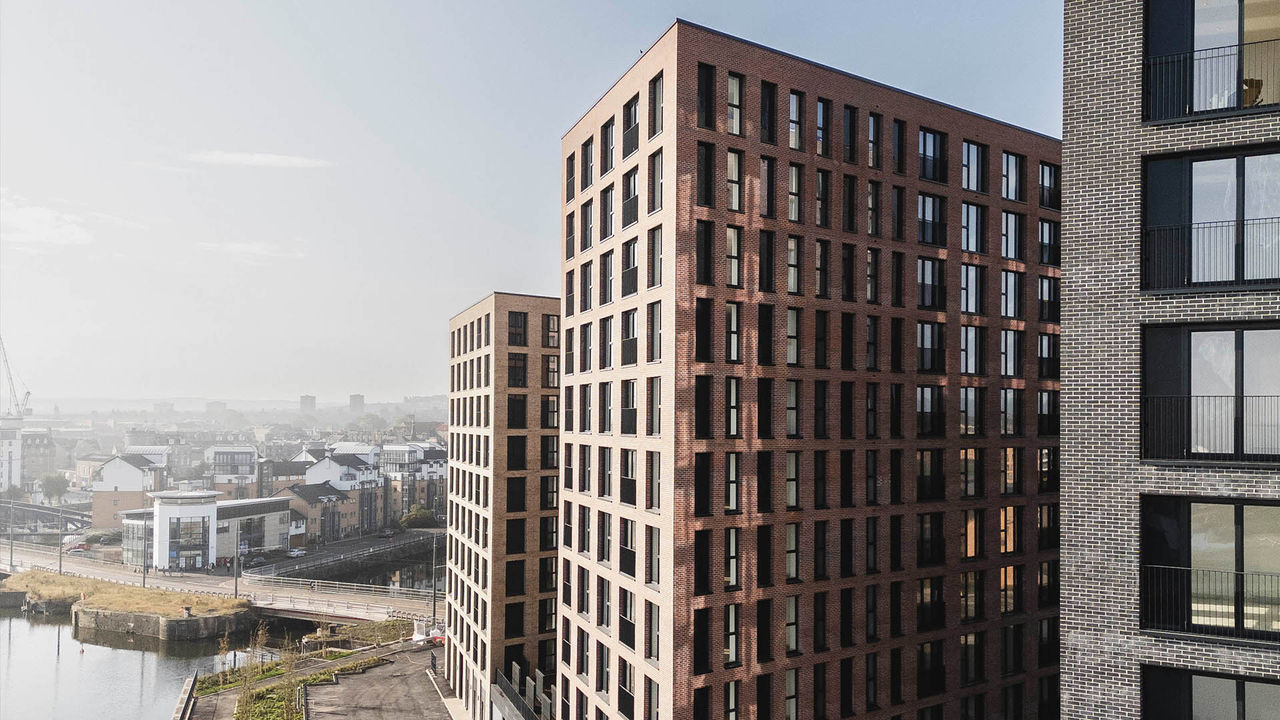

Infrastructure
With close to 40 per cent of properties built before 1946, it has the oldest housing stock in Europe.1 These older homes are often less energy-efficient than modern constructions, resulting in higher carbon emissions and increased costs for households.
At the same time, the UK’s purpose-built private rental market is significantly underdeveloped. There are just 132,000 purpose-built and professionally managed private rental apartments across the country, most of which are in England.2 This represents less than 3 per cent of England’s 4.6 million private rental homes.3
This imbalance between housing demand and supply, combined with the construction sector’s contribution to carbon emissions – accounting for nearly half of the UK’s total – creates an opportunity to address housing needs through the development of new, high-quality communities.4
Goodstone Living currently has around 1,300 build-to-rent homes under construction across Edinburgh, Birmingham and London, with a pipeline of additional developments in regional cities.5
The company has a target of a 50 per cent reduction in operational carbon emissions compared to current UK building regulations, as achieved through investments in energy-efficient solutions and onsite renewable energy. 6,7
For example, the Dockside project in Edinburgh has been designed to be fully electrified, with each apartment featuring air source heat pumps powered by renewable electricity, replacing traditional gas boilers. Homes are also being equipped with low-energy lighting and solar panels, and electric vehicle charging facilities in a number of the parking bays.
Goodstone Living is also focused on delivering tailored social value strategies during construction, supporting local communities by setting targets for construction apprenticeships, recruitment of on-site operations teams and housing affordability.
Outcome
The Dockside project is on track to achieve a 58 per cent reduction in as-designed operational carbon emissions, exceeding its initial target.8
The Smith’s Garden project in Birmingham is on track to deliver a 61 per cent reduction in operational carbon emissions, while the Dagenham Green development in London has reached a 50 per cent improvement against its carbon reduction target.9
Local employment has been supported at Dockside, with 43 per cent of the workforce drawn from the surrounding area.10 In addition to delivering an initial 94 affordable units at Dockside, the remaining 279 market rental units are being delivered at a price point with a target of 50 per cent of units attainable to 50 per cent of local residents.11
‘next generation’ build-to-rent homes
target for operational carbon
Goodstone Living’s ambitious carbon reduction targets have been a catalyst to find innovative ways to make its rental homes more sustainable. Its whole team is behind this effort – sourcing lower-carbon materials, increasing recycled content, exploring alternative design techniques and investing in energy-efficient solutions.”
James Bechely-Crundall
Division Director, Real Estate
Macquarie Asset Management